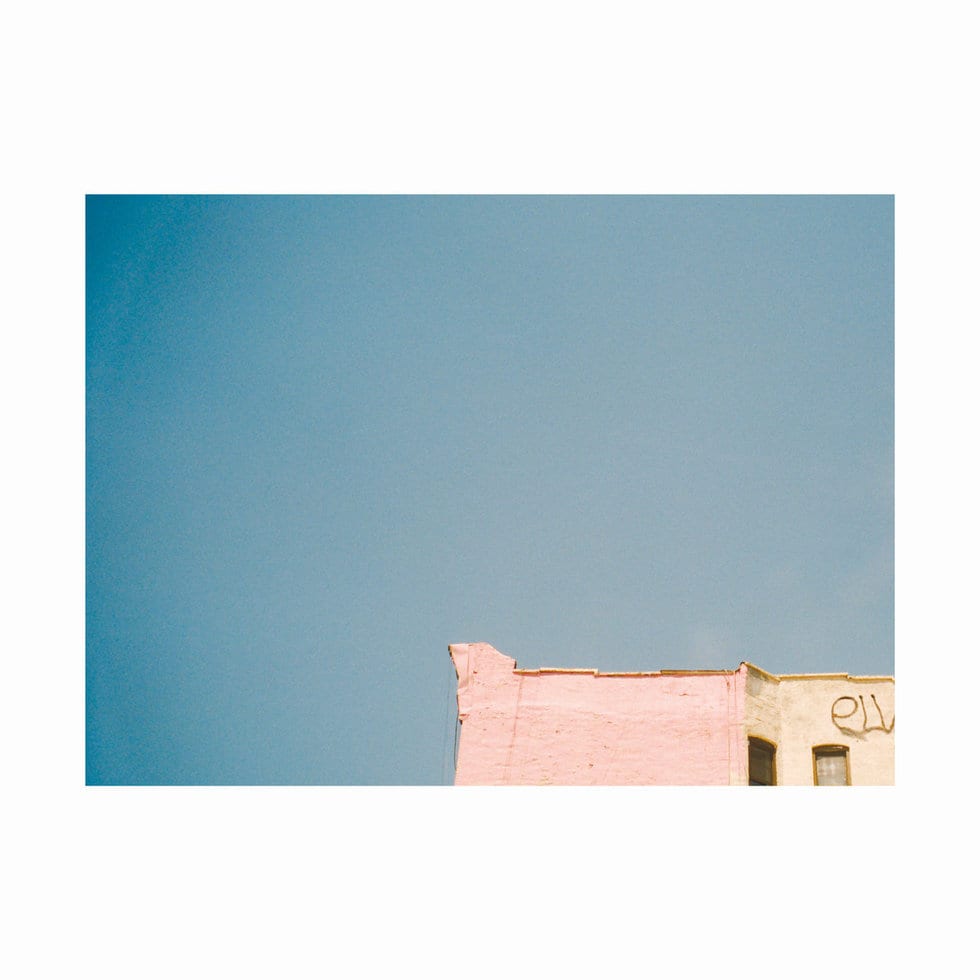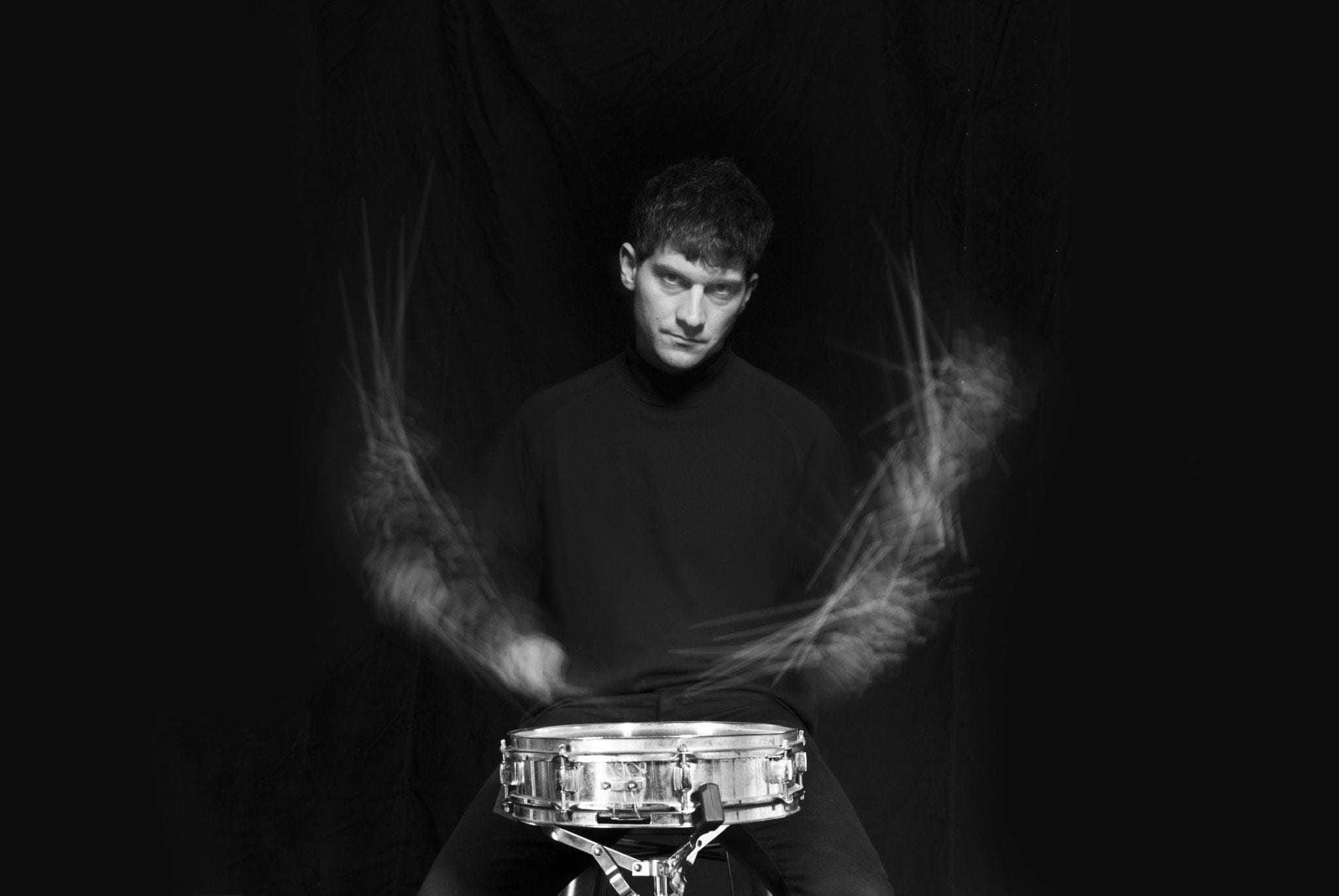
As album titles go, Eli Keszler’s latest, Stadium, seems particularly incongruous when compared to the peculiar, brainy, jazzy music it represents. The inspiration came from Keszler’s recent move from Brooklyn to Manhattan. “After we moved into our East Village apartment,” he explained, “we found a guitar pick on the floor that read ‘Stadium’.” A bit of an idiosyncratic manner on which to hang a title, but Keszler has never been one to follow traditional paths. The Massachusetts-born percussionist is a noted visual artist, sound installation creator, musical educator, and – as Stadium reiterates – highly accomplished and innovative musician.
With Stadium, he’s following along the same lines as his excellent 2016 album, Last Signs of Speed. Both albums work with a unique combination of intense drumming and sparse, often dramatic sound design. The album opens with an appropriate Keszler primer: “Measurement Doesn’t Change the System at All” begins with a subtle synth bed before a sparse, playful bass line accompanies Keszler’s dizzying, razor-sharp, lightning-fast drumming, which is played on a small, economical jazz kit. The instrumentation has an intoxicating effect, with a variety of sonic blips weaving in and out. As with previous albums, Keszler adds a healthy dose of non-musical sounds to the mix, in the case of this track, random bursts of what sounds like the flow of water (whether it’s sampled or organic is difficult to tell).
Within that first track, you could parse out the mission statement of Stadium. But by no means should you stop there. Stadium is full of intense, soothing, melodic moments. While “Lotus Awnings” appears – initially – to continue along the same lines of the track that precedes it, intermittent bursts of brass punctuate the arrangement, acting as a counterweight to the lazy woodwind patches that run through the song.
There are occasions on Stadium when the vibe is one of almost whisper quiet, where the drums are more subtle, and the effects seem to take over. “Which Swarms Around It” is classic ambience, creating as oasis of calm, albeit an odd calm. “Flying Floor for U.S. Airways” is similarly structured, but the drums (along with some loose, “watery” percussion) are a bit bolder and present.
Within the structure of Stadium, there are plenty of surprises. “French Lick” is led primarily by a sort of wobbly trombone sound that gives the album some uncharacteristic mid-album levity. “Was the Singing Bellowing” is a haunting track with a backdrop of echoes and effects that sound like they were lifted from some ancient dungeon. “We Live in Pathetic Temporal Urgency” is Stadium in slow motion, wherein Keszler eschews the manic tempi for a more loose, casual, almost ballad-like jazz feel. The synths and dramatic low-register bells fall in line, allowing the composition to breathe.
It’s important to note that Stadium should not be classified as an “electronic” album, despite the occasional antiseptic nature of some of the sounds. The album was all recorded live with acoustic percussion and instrumentation, and the synthesizers all seems to be of a more organic, retro mode than most of Keszler’s contemporaries. This type of setup allows for unique textures and an overall mood that seems to focus more on feel and less on melodies or easily identifiable riffs. Call it “jazz noir”.
Eli Keszler’s music occupies a unique but imaginative space on the experimental music landscape. Despite its unusual approach, it’s warm, deeply felt, not all that dissonant, and oddly calming. Stadium is a quantum leap forward for its genre – whatever that genre may be.


![Call for Papers: All Things Reconsidered [MUSIC] May-August 2024](https://www.popmatters.com/wp-content/uploads/2024/04/all-things-reconsidered-call-music-may-2024-720x380.jpg)



